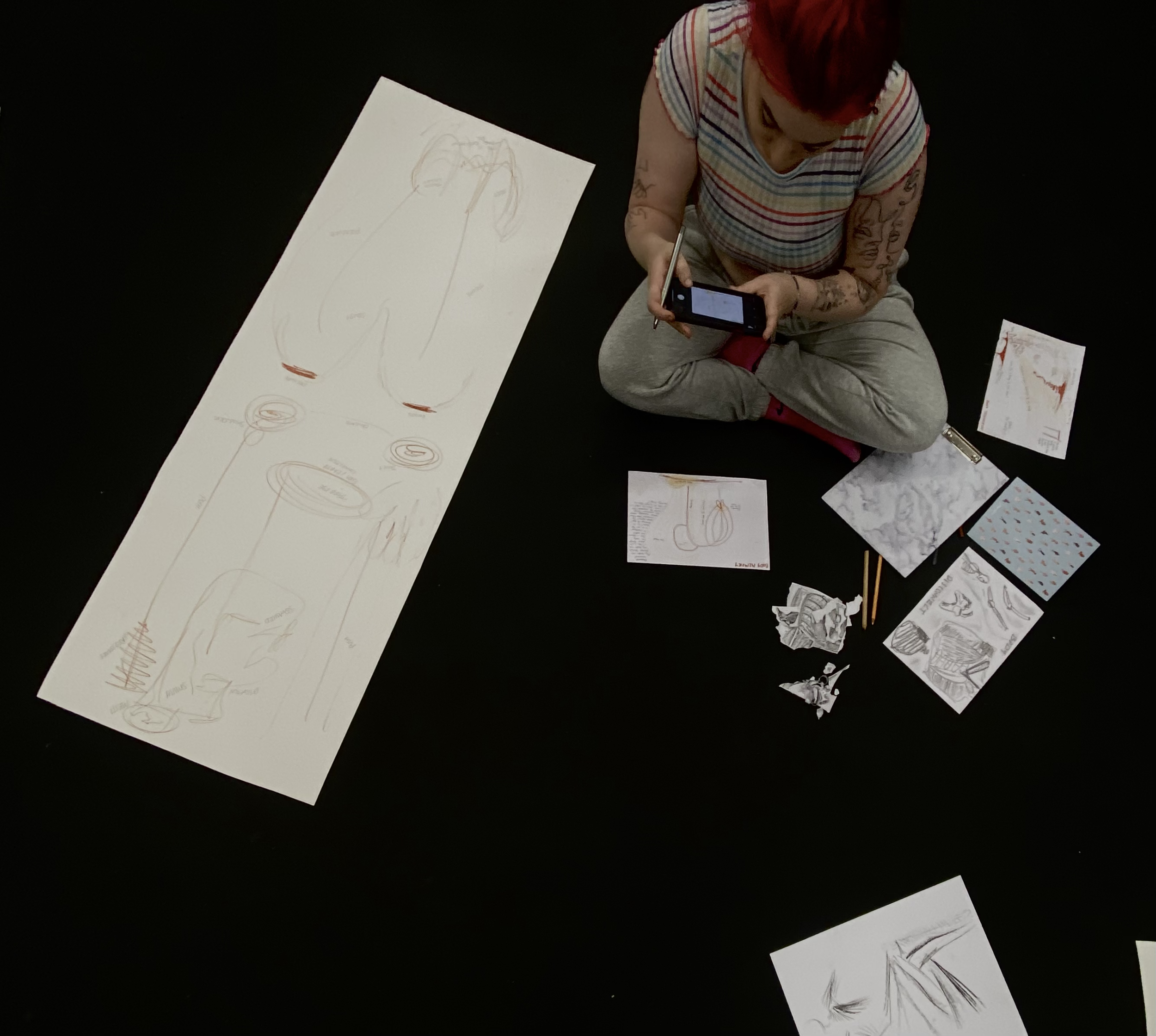
As a part of London Performance Studio ‘s program ‘Horizontal Practices’ I had the chance to facilitate a series of four workshop over a month in their studio.
This workshop explores the transversality between performance and drawing practices, and offers practitioners and visual creatives a moment to explore their somatic dialogue, through the methodology of palimpsest.
Building Palimpsest Bodies Workshop
Palimpsest a manuscript or piece of writing material on which later writing has been superimposed on effaced earlier writing.
something reused or altered but still bearing visible traces of its earlier form.
Whereas a palimpsest used to be a textual conversation, this workshop aims to break down the palimpsest that is a person's body and reconstruct it visually. The idea is to intersect the two main ways in which one records bodies in space - memory (as body memory) and mapping/marking - "Body Image" and "Thought Figure".
Participants will be invited to excavate their body memory - movements, postures, anchored in our body by physiological experiences or practices that lead to a body adaptation (this may come from artistic practice or due to chronic situations, new perception/understanding/needs...). This process allows us to connect to the haptic senses and start the palimpsest conversation that we then transcribe on paper. We reincarnate the dialogue through marking, body mapping, collage, drawing, etc.
The workshop last between 1:30 and 2 hours, sectioned in four parts.
First part : Contemplative doodling - 20 minutes
Second part : Movement exploration - 20 minutes
Third part : Performative drawing - 30 minutes
Forth part : Collective drawing - 20 minutes (or more depending one length of workshop)
1
This first phase consists of taking the time to lie down and anchor the body in the room and inside, to take the time to check in and notice where and how the body feels in the moment. By alternating reflection on anchoring and doodling/drawing, this phase opens up to the transversality between the image of the body and drawing in stillness.
2
Movement comes from the decomposition of body parts, joints and articulations, where every muscle, every tension, every direction is to be tested and felt, imagined and listened to. Movements evolve around somatic practice and also from body memory. Participants are invited to explore their own bodily state and memories of the body itself.
3
Participants receive information on how to work with charcoal from the body. They are given a visual vocabulary that they can use to explore their own conversation on paper. It is in this part of the process that participants create their own palimpsest, where the conversation between somatic practice and visual language starts. Paper becomes a record, a mirror of its layers and chronology, how to get from the surface to the core feelings.
4
Towards the end of the session, the participants are invited to gather around a long format and coexist on paper. Taking up their own marks and movements, together they create the palimpsest of the workshop and its history.
As their lines and bodies cross and come together, their individual palimpsests take the form of a map, each colour and layer illustrating their own journey.

















